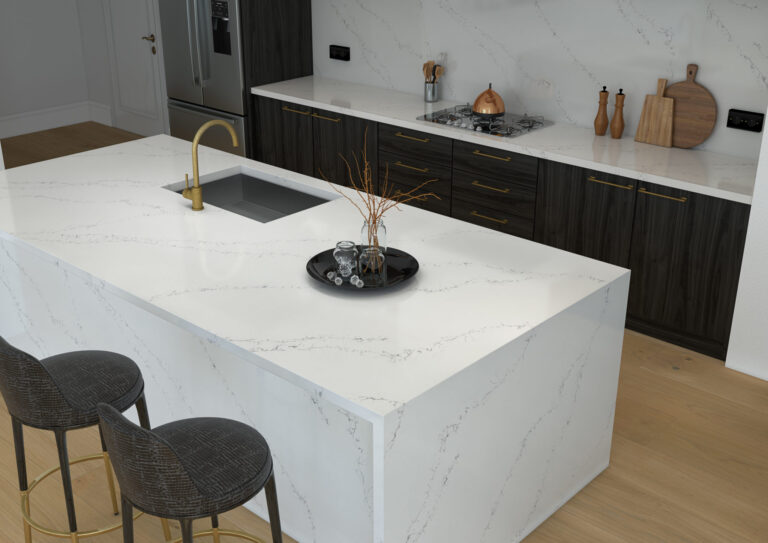
The dining room, once a central and revered space in many homes, has been steadily disappearing from the modern floor plan. This change is a reflection of broader shifts in lifestyle, economic considerations, and the evolving needs of homeowners in the 21st century. In this article, we will explore the factors contributing to the disappearing dining rooms, how these changes are impacting family dynamics and home design, and what the future of dining spaces might look like.
The Rise of Open Concept Living
The open-concept floor plan has been one of the most significant architectural trends of the past few decades. This design ethos prioritizes spaciousness, fluidity, and connectivity between the kitchen, living room, and dining area. Traditionally, the dining room was a separate, often formal, space reserved for special occasions. However, in the quest for larger, more interconnected living areas, many homes are now being designed without a distinct dining room, or with an integrated dining space that blends into the larger living area.
The shift towards open-concept living has not just been about aesthetics; it also responds to modern living patterns. Families today are often busier than ever before, and the dining room—once a space for formal meals and conversation—no longer fits the rhythm of everyday life. People now seek multifunctional spaces that serve as places to eat, entertain, work, and relax. A formal, separate dining room may feel redundant in this context, prompting many homeowners to opt for more flexible, multipurpose spaces instead.
The Disappearing Dining Rooms

The disappearing dining rooms is also a result of changing social norms and eating habits. In the mid-20th century, dining rooms were seen as places for family gatherings, formal dinners, and entertaining guests. But as lifestyles became more casual, the necessity of maintaining a formal dining space diminished. Today, many families prefer casual dining, with meals often enjoyed in the kitchen, on the couch, or even in front of the television.
This shift can be attributed to several factors, including changes in family size, work schedules, and cultural attitudes toward food and mealtime. The average family today is smaller, and both parents often work full-time, making it harder to commit to the traditional sit-down dinner. When meals are more likely to be quick, informal, or even eaten on-the-go, the formality of a dedicateddisappearing dining rooms begins to feel out of step with the pace of modern life.
Moreover, the rise of takeout, food delivery services, and busy work schedules has made the act of dining less about the ritual of gathering around a table and more about convenience. Families are increasingly opting for fast, easy meal options rather than preparing large, sit-down meals. As a result, the need for a dedicated space for these more elaborate dining experiences has waned.
Economic Factors and the Changing Housing Market
Another factor contributing to the disappearing dining rooms is economic. As real estate prices continue to rise, homeowners are looking to maximize the use of their living space. In many cases, the addition of a formal dining room simply isn’t seen as a necessary investment. Smaller, more compact homes with open-concept layouts are often more affordable, and by disappearing dining rooms, homeowners can use the space for other functions.
Furthermore, the pandemic-era boom in remote work has caused many homeowners to reimagine the use of their spaces. Home offices have become a priority for many people, leading to the repurposing of rooms that might once have been reserved for formal dining. A dining room could easily be converted into a productive workspace or a small home gym, making it a more functional and desirable area of the home.
While not everyone can afford to purchase a larger home with a dedicated dining room, many homeowners are opting to prioritize spaces that support a broader range of activities. In some cases, the formal dining room may be sacrificed in favor of a larger kitchen island, a multifunctional great room, or even an additional bedroom or office, contributing towards disappearing dining rooms.
Technological Influences and Lifestyle Changes
Advances in technology and changes in social behavior have also played a role in the disappearing dining rooms. The way we consume food and entertainment has changed dramatically in recent years. The growth of streaming services and the rise of binge-watching culture mean that many people now enjoy meals in front of the TV or while watching movies on their tablets. This has contributed to the disappearing dining rooms as a space for family meals.
At the same time, technology has made cooking and eating more flexible. Smart kitchen appliances, meal kits, and app-based grocery shopping have all made preparing and consuming food easier and more convenient. These innovations have altered not only the way we prepare food but also how we think about mealtimes. Many people now prefer to eat when it’s convenient for them, rather than adhering to the traditional structure of family mealtimes that would take place in a dedicated dining space.
Social media has also influenced dining habits. The visual appeal of food—especially in the context of Instagram, TikTok, and Pinterest—has created a new focus on the kitchen and other social areas of the home. Instead of focusing on the formality of a dining room, many people now invest in creating visually appealing kitchens and open spaces that can be used for both cooking and entertaining. In this new paradigm, food is often seen as a social experience that happens in the kitchen or around an island, rather than a formal sit-down affair.
Cultural Shifts and the Changing Role of Food

In many parts of the world, food and dining are no longer seen through the lens of traditional rituals. As global cultures merge and evolve, so too does the way we approach food. The idea of a formal dining room—associated with specific cultural traditions and practices—may simply no longer resonate with many people, especially in multicultural and diverse communities where dining customs vary widely, contributing to disappearing dining rooms.
For some, the traditional dining room evokes outdated notions of formality and restriction. In an age where informality is prized, the dining room, with its rigid structure, seems less inviting than an open kitchen or a casual breakfast nook. The disappearing dining rooms is being replaced by spaces where people can socialize in a more relaxed and less ritualistic manner.
Moreover, the rise of food culture—whether through celebrity chefs, food blogging, or foodie tourism—has led to an appreciation of food that transcends the need for a formal setting and hence disappearing dining rooms. Food is increasingly seen as a way to express creativity, celebrate culture, and foster connections. In this context, the act of sharing a meal in a more informal, flexible environment has become just as meaningful, if not more so, than sitting down in a traditional dining room.
The Future of Dining Spaces: Evolution or Extinction?

While it may seem that the dining room is headed toward extinction, it’s important to recognize that the concept of the dining area is simply evolving. The need for dedicated dining spaces has not disappeared entirely; it has simply transformed into something more adaptable to modern needs. Many new homes are incorporating spaces that serve a similar function but with a more fluid, adaptable approach.
In some cases, the dining area has simply been reimagined. Instead of a large, formal table surrounded by chairs, designers are opting for more flexible and compact dining areas, often integrated into open-concept spaces. For example, kitchens with large islands or breakfast bars now serve as hubs for eating and socializing, offering a more informal and accessible alternative to the traditional dining room.
As design continues to prioritize flexibility and multifunctionality, it is likely that dining areas will continue to shift away from formality and toward spaces that can be used for a variety of purposes. In future homes, the concept of the dining room may give way to adaptable spaces that are capable of functioning as a workspace, an entertainment area, or a space for casual meals with family and friends.
In larger, more upscale homes, we may still see dedicated dining rooms, albeit in a less conventional format. These spaces may be more integrated into the home’s overall design and could serve as flexible entertaining areas, where people can host gatherings, celebrate holidays, or engage in other social activities. In these homes, the disappearing dining rooms may evolve into a more versatile space that serves multiple purposes, while maintaining some of its original functions.
Conclusion
The disappearing dining rooms is a phenomenon that reflects the broader transformations occurring in society, from changing work habits to evolving social norms around food and eating. As people place greater value on flexibility, efficiency, and informality, the traditional dining room has become increasingly obsolete. But while the classic formal dining room may be vanishing, the concept of shared meals and spaces for dining is far from gone. The future of the dining area lies in its ability to adapt and serve a variety of needs, making it more integrated, accessible, and multifunctional. As home design continues to evolve, the disappearing dining rooms—like the family meal—will endure, albeit in a new and transformed form.


